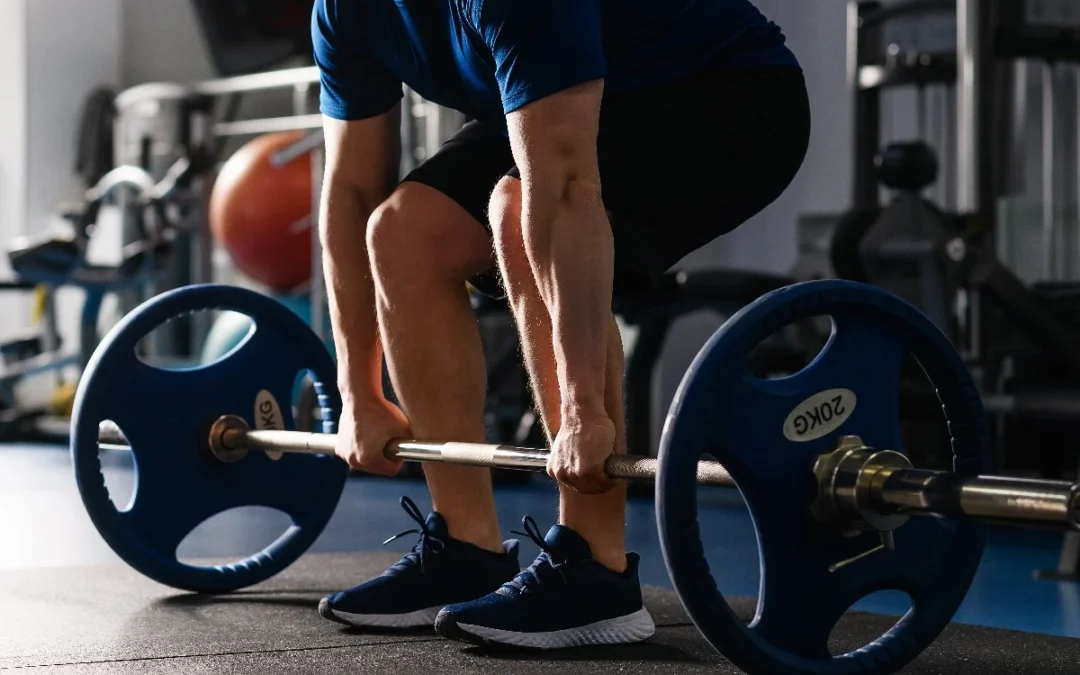Strength and conditioning is a cornerstone of health and fitness, but determining how to get back at it can be complex if you haven’t been to the gym or followed a training routine for some time.
Whether you have had a child, been recovering from an illness or injury, or haven’t had the time you’d like to work on your physical well-being, the key is always to start where you are now to avoid injury while creating a workout programme that helps you progress towards your goals.
I often work with clients who are keen to return to working out but want to avoid repeating an injury or straining a newly healed muscle or bone. The great news is that strength and conditioning can be fantastic for both rehabilitation and injury prevention.
In this article I’ll clarify what strength and conditioning is, why it’s beneficial, and share some tips and guidance to ensure your return to training is safe, well managed and comfortable.
What Is Strength and Conditioning – And Why Is it Important?
Every personal trainer or fitness coach uses their knowledge of sports science and movement principles when creating a workout programme. Strength and conditioning underpin the vast majority of exercises you might expect to perform.
However, it’s essential that any workouts or movements you do are linked to your overarching aims, whether you want to get stronger, faster, leaner, or fitter or improve your skills and agility for a specific sport, career, or hobby.
While you might assume that strength is about lifting weights, it’s actually hugely relevant to people of every age and fitness level, including older adults who want to retain the mobility and flexibility to get up from the floor unassisted or ensure they can bend, stand, and move freely.
Therefore, a strength and conditioning programme I design for one client might look completely different from another. I use practical exercise, high-quality movement, and injury prevention to develop training plans that are achievable, progressive, and safe.
A programme should be designed around you, blending dynamic movements with static exercises and a combination of activities that improve your physical or sports performance, concentrating on stability, power, endurance, strength, speed, and agility.
Why Focus on Strength and Conditioning When Returning to Training?
Most of us automatically want to resume the same workouts or sports that we have previously enjoyed or excelled at. Still, the risk of injury is high without the right foundational strength and mobility. For example, if you’re a powerlifter who has been away from the gym for several months, attempting your lifetime PB on day one is an easy way to set a collision course for disaster.
Likewise, if you approach your new workouts with a perception about what you ‘should’ be able to do over what you can do, you might perform movements with bad form, which can be detrimental.
Instead, refocusing your attention on creating a stable, reliable basis of fitness and strength will put you in a great position to gradually develop your skills, power, speed, and core while stabilising or rehabilitating any injured joints, ligaments, bones, or muscles.
It’s easiest to think of strength and conditioning as a process, not a series of movements since these will depend entirely on your current fitness levels and what you’d like to achieve.
By creating a well-rounded physiology, you can work on areas of weakness until you have the capacity and strength to do the things you want, whether that’s lifting huge weights, sprinting around a track, scoring goals with your football team, or real-life scenarios like walking the dog.
What Does Strength and Conditioning Training Look Like?
I’ve explained the diversity of strength and conditioning exercises, and each individual will have a different set of targets and factors that contribute to their programming. Your plan will also depend on the level of training or overload you’re already able to handle easily—increasing the duration, frequency, or duration of your workouts from there.
As a very general overview, strength and conditioning normally incorporates elements of each of the following:
- Rehabilitation and injury prevention exercises, including mobility drills, warm-ups to engage and activate muscles, and stretches that contribute to better flexibility in the hip flexors, hamstrings, and spine.
- Cardio conditioning and agility training movements that improve power, such as dynamic jumps, push-ups, weightlifting, or exercises that concentrate on speed.
- Strength training exercises like squats, Romanian deadlifts, and bench presses to improve strength and muscle mass while ensuring good movement quality.
- Core-based workouts, like dead bugs, to help you develop a stable, strong core that supports all other movements.
The main point of strength and conditioning training is to ensure you can perform any movement without the potential to injure yourself. Regardless of your aims and aspirations, blending these types of movements gives you underlying strength, taking a balanced approach to improve your strength and condition your body.
Instead of doing as much as possible, as quickly or as heavily as you can, strength and conditioning develops the tools you need by augmenting your endurance, reinforcing stable movement patterns, and ensuring you have, for instance, the core stability to pick up a heavy barbell without bad posture.
How Can I Resume Strength and Conditioning Training Safely?
Exercise, fitness, and workouts seem to be purely physical activities, but the reality is they’re also a big mental game. We’ve all had to dig deep to find motivation or hold ourselves to the standards or commitments we have made when we don’t feel like training or when we’ve had a bad night’s sleep.
For anybody who has been away from training for a long period, that becomes more important. You might feel frustrated, annoyed, or even angry and find it tough to start all over again or commit to a period of targeted training to regain the endurance, strength, or fitness you feel you’ve lost.
My advice is always to treat your training as a long-term process and to work with a trainer you trust to keep you on the right track, using all the principles of strength and conditioning I’ve set out here to ensure you don’t put yourself at risk of another setback.
While it takes time to achieve significant progress, a strength and conditioning programme is undoubtedly the best way to boost your long-term athletic performance—and, done right, can protect you from further injuries.


Recent Comments